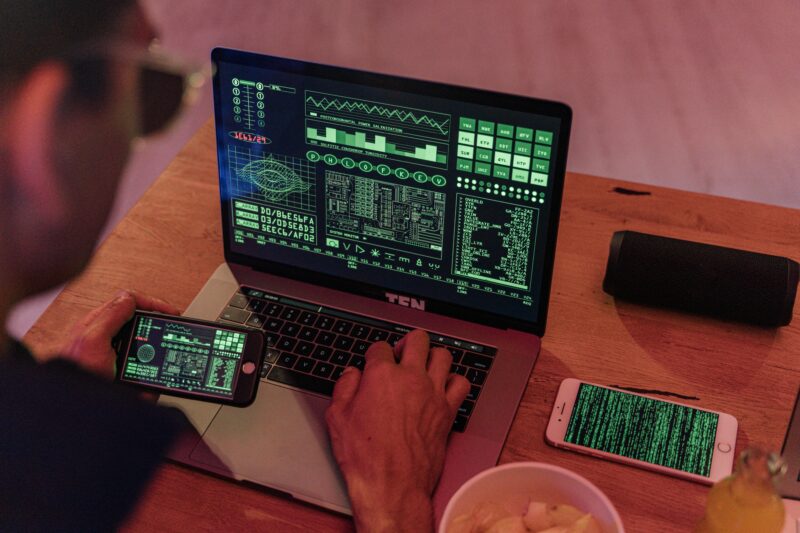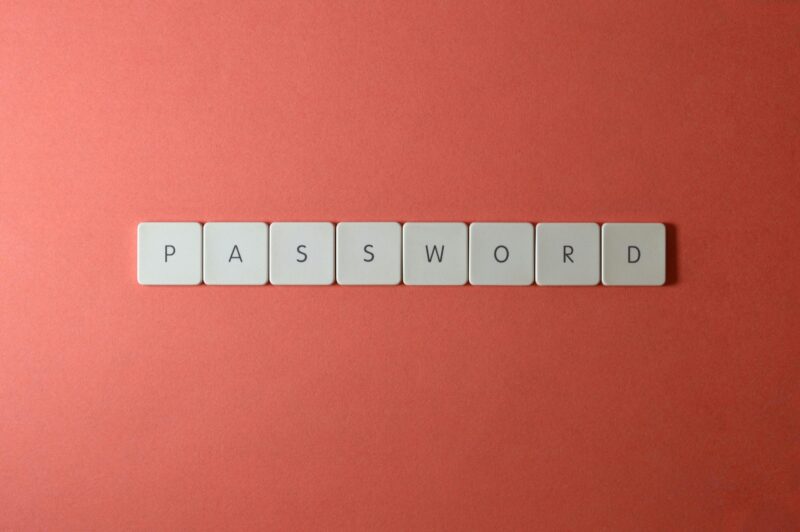One of the most common problems with Windows is unexpected kernel mode trap errors. This article will go through some troubleshooting steps to fix this error and provide general advice for when you run into these issues.
The “unexpected kernel mode trap windows 10 2021” is a bug that has been present for a while. Microsoft has released a fix to the issue.
Authored by Matthew Adams, expert in Windows and Software. Matthew is a freelance writer who has written a number of articles on different technology-related themes. His major interest is the Windows operating system and all that surrounds it. He is enthralled by… Read more
- Incompatible hardware, out-of-date device drivers, CPU overclocking, or damaged system files may all cause the Unexpected Kernel Mode Trap Windows 11 issue.
- By removing recent system modifications, you may be able to repair the Unexpected Kernel Mode Trap problem.
- Even better, try replacing RAM modules to permanently resolve the BSOD problem.
- The file and disk scanning tools in Windows 11 may also be useful in resolving the Unexpected Kernel Mode Trap problem.
By Clicking on the Download File, You Can Install Xinstall
We propose Restoro PC Repair Tool to address a variety of PC issues: This program will fix common computer faults, protect you against file loss, viruses, and hardware failure, and optimize your PC to run at its best. In three simple actions, you can immediately fix PC problems and eradicate viruses:
- Download the Restoro PC Repair Tool, which includes patent-pending technologies (patent available here).
- To detect Windows faults that may be causing PC difficulties, click Start Scan.
- To correct problems that are hurting your computer’s security and performance, click Repair All.
The BSOD fault Unexpected Kernel Mode Trap may occur in Windows 11. The code for this problem is 0x00000007F.
When the problem occurs, a black screen displays with the Unexpected Kernel Mode Trap error message and code, forcing Windows to restart.
Some customers have reported that this problem appears on their PCs at random after upgrading to Windows 11. This problem may develop, though, when they use certain hardware or software. When users attempt to sign in to Windows, they may get the Unexpected Kernel Mode Trap.
Users of Windows 10 who encountered the unpleasant Unexpected Kernel Mode Trap issue faced the same thing.
Are you also acquainted with it? If that’s the case, read on for possible remedies to that BSOD issue, but first learn about the most prevalent reasons.
What Effect Do Black Screen of Death Problems Have on Your Computer?
A Windows 10 Blue Screen of Death error is the same as a Black Screen of Death problem. In Windows 11, however, Microsoft altered the BSOD backdrop color to black.
In the new desktop platforms, BSODs are now known as Black Screen of Deaths. System crashes on Windows PCs are known as Blue (Black) Screen of Death problems.
They’re also known as stop errors since they always force the operating system to restart. There are a variety of software and hardware-related reasons for such problems.
What Causes the Error Unexpected Kernal Mode Trap?
 The Unexpected Kernal Mode Trap error’s bug check reveals that the Windows OS kernel failed to collect a trap created by a computer’s CPU. That suggests your computer’s hardware is broken or incompatible.
The Unexpected Kernal Mode Trap error’s bug check reveals that the Windows OS kernel failed to collect a trap created by a computer’s CPU. That suggests your computer’s hardware is broken or incompatible.
Your computer, for example, might have malfunctioning RAM (system memory). Alternatively, some of the supplied disks and disk controllers may not work with Windows 11.
This problem might also be caused by your PC’s outdated or incompatible device drivers. After updating to Windows 11, this is a common occurrence.
Aside from that, the Unexpected Kernal Mode Trap problem might be caused by faulty system files, overclocked CPUs, or malware. As a result, there are a number of prevalent reasons of Blue Screen of Death mistakes.
What is the solution to the Unexpected Kernal Mode Trap error?
1. Verify the compatibility of newly installed hardware devices
Did you get the Unexpected Kernal Mode Trap problem on your computer or laptop soon after you installed (added) new hardware? If that’s the case, it’s possible that the freshly installed hardware is to blame.
Users who need to resolve the Unexpected Kernal Mode Trap problem should unplug and delete any recently installed devices from their computers.
After that, restart your computer to check whether the problem still exists. If so, the new hardware may not have been incompatible with the software on your computer.
2. Run a scan using System File Checker
- To start, hit Windows + S at the same time to bring up a search bar.
- To find the Command Prompt, type cmd into the search box.
- For the Command Prompt search result, click Run as administrator.
- After that, type the following command and press Enter: DISM.exe /Online /Cleanup-image /Restorehealth DISM.exe /Online /Cleanup-image /Restorehealth
- When the Deployment Image Servicing scan is finished, run sfc /scannow into the command prompt and click Enter.
- Wait for the System File Checker scan to finish 100 percent of the way.
3. Perform a malware scan
- Select the Windows Security system tray icon and double-click it.
- On the left side of Windows Security, choose the Virus & Threat Protection tab.
- Select the Scan options navigation link from the drop-down menu.
- Then choose Full scan from the drop-down menu.
- Select Scan Now from the drop-down menu.
Malware may also be removed using third-party malware detection software. Malwarebytes Premium is one of the most well-known and effective third-party anti-malware solutions available for Windows.
4. Do not overclock your computer
Have you used third-party overclocking software to overclock your PC’s processor? If this is the case, the Unexpected Kernel Mode Trap error on Windows 11 may be the result of this.
Surprisingly, one possible cure is to undo all of the overclocking you’ve done on your computer. Reset your computer’s CPU to its default speed. To do so, seek in your overclocking software for a restore system default option.
5. Run a CHKDSK scan on your computer
- As mentioned in the first few stages of resolution two, open the Command Prompt.
- Enter the following command: chkdsk c: /f
- Enter the code with the Enter key.
- Then, to confirm, hit the Y key.
- To access the menu, click the Start taskbar button.
- Then click Restart after selecting the Power option.
6. Install the latest device drivers
- To access the Device Manager window, right-click the Start menu icon and choose Device Manager.
- Look for gadgets marked with yellow exclamation points.
- If you see a yellow exclamation point next to a device, right-click it and choose Update driver.
- Then, inside the Update drivers tool, pick the Search automatically for updated drivers option.
- Try upgrading your PC’s graphics, chipset, network, and input device drivers if you can’t identify a device with a yellow exclamation mark in Device Manager.
Driver updater software is the best approach to update device drivers in general. A driver updater utility will scan your computer and identify all of the devices that need driver updates.
Then you may use the driver updater tool, manually, or via Device Manager to update them. Even while the tools on our list are geared at Windows 10, the most of them are also compatible with the new operating system.
7. Run a memory diagnostic on Windows
- To discover the Windows Memory Diagnostic tool, use the search tool’s magnifying glass button.
- In the search box, type Windows Memory Diagnostic.
- Then choose the option to restart now and check for issues.
- After that, after the restart, wait for the diagnostic check to complete.
- If the findings aren’t shown by a Windows Memory Diagnostic notice, right-click the Start button and choose Event Viewer.
- Within the Event Viewer window, select Windows Logs, then System.
- Choose the “Find” option.
- Click the Find Next button after typing MemoryDiagnostic into the search box.
- The findings of MemoryDiagnostic may then be seen on the General tab.
Replace your PC’s sick RAM module with a new one if Memory Diagnostics reveals faulty RAM.
8. Restore Windows 11 to a previous version
- Select the Run option from the menu by pressing the Windows key + X at the same time.
- Click OK after entering the following text in the Run window: rstrui
- If you have the opportunity to choose an alternative restore option, do so and then click Next.
- If you have the option, choose the Show additional restore points tick.
- Then choose a restore point date that will roll back Windows 11 to a period when the Unexpected Kernel Mode Trap problem was not present. Alternately, use the most recent restoration point available.
- To continue, click Next.
- To restore Windows 11 to the set date, choose Finish.
After reinstalling Windows 11, you may need to reinstall certain apps. By choosing Scan for impacted applications in System Restoration, you can see what software a particular restore eliminates.
9. Reset your Windows 11 computer
Resetting Windows 11 returns the operating system to its factory settings, which means you’ll have to reinstall any third-party software that wasn’t preloaded on your computer. Resetting Windows 11 is only suggested as a last option.
- To begin, press the Start button.
- On the Start menu, go to the pinned Settings app.
- In the Settings menu, choose Recovery.
- To access that tool, press the Reset PC button.
- Then, on the Reset this PC box, choose the Keep My Files option.
- Choose between a local reinstall and a cloud download (whichever you prefer).
- Press the Next and Reset buttons to proceed.
What Is the Procedure for Entering Safe Mode for Troubleshooting?
 If the Unexpected Kernel Mode Trap problem prevents you from logging in to Windows, try accessing the Windows Recovery Environment. To force shutdown, press and hold the Power button for 5-10 seconds during starting (ideally during a logo). To enter recovery mode, repeat the process three times.
If the Unexpected Kernel Mode Trap problem prevents you from logging in to Windows, try accessing the Windows Recovery Environment. To force shutdown, press and hold the Power button for 5-10 seconds during starting (ideally during a logo). To enter recovery mode, repeat the process three times.
You may choose to enter Safe mode after you’ve entered the Windows Recovery Environment. This is a Windows diagnostic (troubleshooting) mode that launches the operating system with just the most basic drivers and data. You can get into that mode with WinRE by doing the following:
- On the Startup Repair screen, first pick the Advanced Options option.
- On the Choose an option menu, choose Troubleshoot.
- Then choose Advanced settings from the drop-down menu.
- Choose the Startup Settings option from the drop-down menu.
- To reboot, press the Restart button.
- Press the F5 keyboard key to choose the Enable Safe Mode with Networking option after rebooting.
- After that, you may use Safe Mode to implement the above-mentioned resolutions.
These are the most likely solutions to the Unexpected Kernel Mode Trap issue. That doesn’t mean they’ll always fix the problem, but there’s a strong chance they will.
The Unexpected Kernel Mode Trap problem may also be fixed with Microsoft’s Blue Screen of Death troubleshooter. Open the Troubleshoot blue screen issues website to find out more about that troubleshooter.
Also, don’t forget to read this advice on how to fix the 0x0000000F starting problem. The suggestions made here for Windows 10 may also be used by Windows 11 users.
If the remedies in this tutorial do not resolve your computer’s Unexpected Kernel Mode Trap error, your computer might be suffering from a more serious hardware problem, such as a failing power supply or a damaged motherboard component. In such case, try returning it to the manufacturer’s service center for repair.
We would welcome your input if you found this information to be useful. What steps did you take to correct the problem? Please let us know in the comments section below.
Frequently Asked Questions
What causes Unexpected_kernel_mode_trap?
A: This message is displayed when you are trying to load a kernel mode application but the system has crashed or incorrectly configured to prevent this. The message usually tells you how to fix it, however there may be other causes for this error that would require specific instructions from your operating systems manufacturer.
How do you fix unexpected kernel mode trap error?
A: Its a hardware issue, and it would be best to have your computer checked out by an authorized technician.
What is kernel trap error?
A: This is a BSOD error that appears when you are trying to boot into Windows
Related Tags
- unexpected kernel mode trap windows 10 2020
- kernel mode trap windows 11
- unexpected kernel mode trap valorant
- windows 11 insider error
- unexpected kernel mode trap halo infinite
